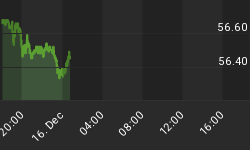The Federal Open Market Committee (FOMC) has decided to reinvest any proceeds from maturing securities acquired through its $1.25 trillion mortgage-backed security (MBS) purchase program. The proceeds won't be invested in short-term, but in long-term Treasuries.
Federal Reserve (Fed) Chairman Bernanke has long argued that the MBS program constituted credit easing, not quantitative easing. Credit easing, the argument goes, ought to support the functioning and liquidity in a market. In various speeches, Bernanke has called the chapter on credit easing closed, a sign that the Fed is engaged on an "exit strategy".
We had repeatedly cautioned that merely not buying additional securities is no exit at all, but rather a pause. To be consistent with its public communication, we argued quantitative easing would follow credit easing. Quantitative easing is the purchase of government debt with long maturities. In many ways, quantitative easing is not all that different from credit easing, because of the tight spreads (close relationship) these securities tend to trade in.
The cat is out of the bag now: credit easing it out, there is no exit, quantitative easing is the name of the game. For now, the size of the Fed's balance sheet is to remain constant, that is, the maturing securities won't be running off, but will be re-invested. It may be worth mentioning that, historically, central banks rarely ever succeed in substantially reducing the size of their balance sheets after periods of expansion. Even when a central bank wins a fight against inflation, we never return to old price levels; policy makers tend to be satisfied in preventing further abnormal increases at an elevated level.
This is in stark contrast with the European Central Bank (ECB) that drained €244 billion ($322) from the markets in the eurozone.
The dollar plunged from its intra-day highs as a result of the announcement. What keeps the dollar from falling further is the confidence that the Fed will do whatever it takes to ensure the negative effects of quantitative easing, inflation, will not be a problem. To that argument, we would like to point out a) this sounds a lot like a "frog in a boiling pot" theory as the Fed is further boxing itself into a corner; and b) note that Bernanke may see a weaker dollar as a positive rather than a negative side effect of his policies. In our assessment, Bernanke, unlike his predecessors, considers the U.S. dollar as one of the policy tools at his disposal.
















